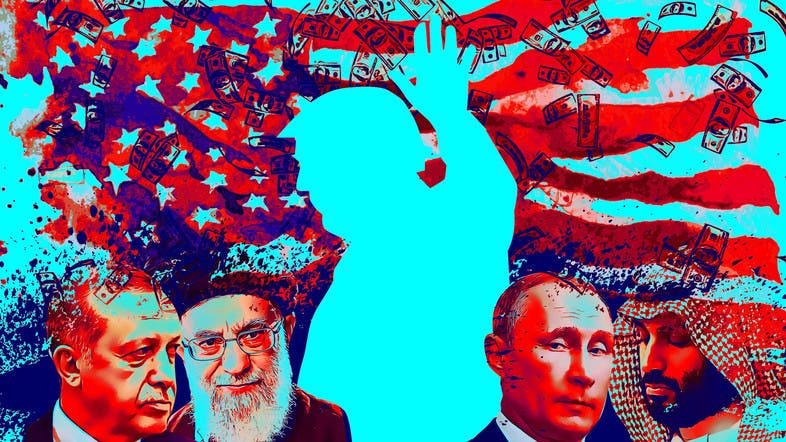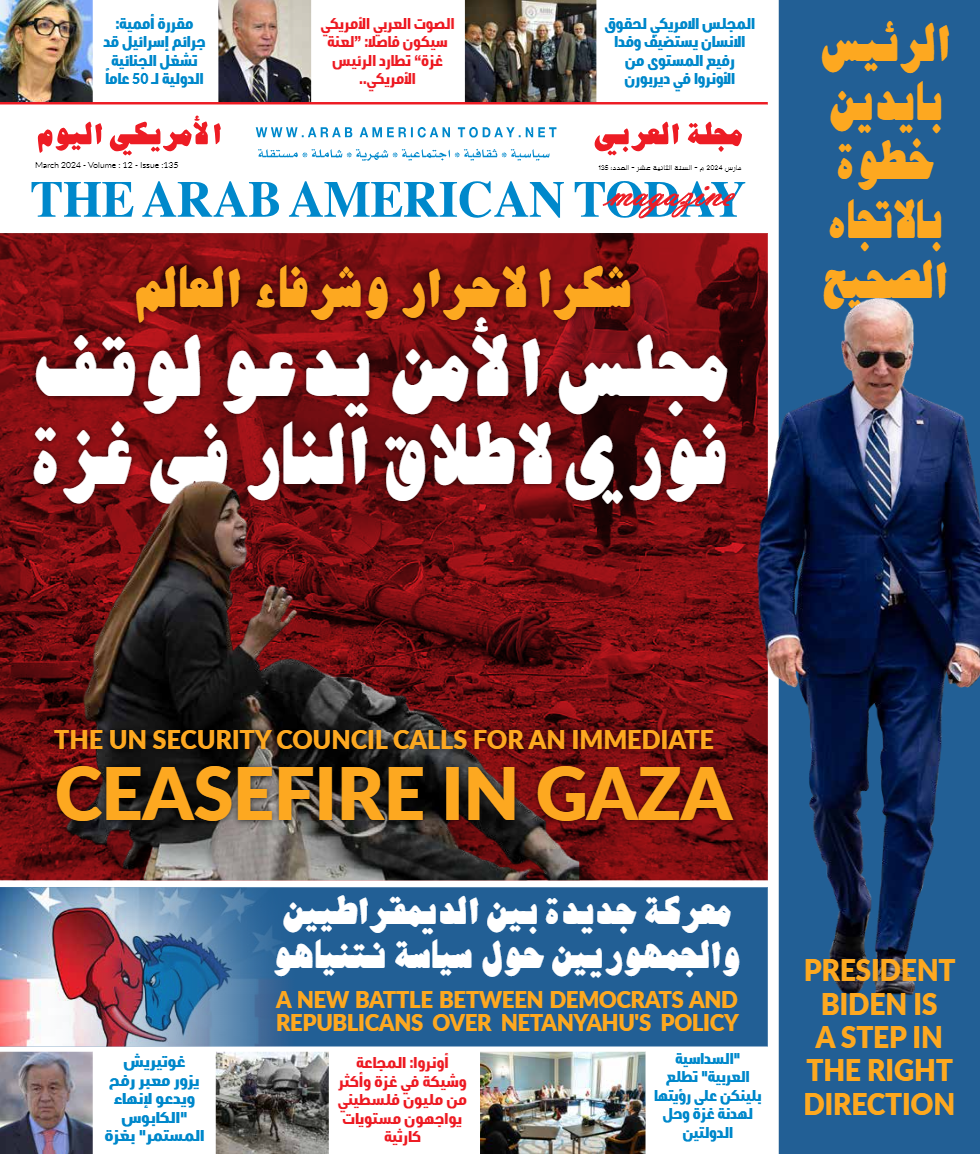
Specter of war in the Middle East rises as America retreats
2020-01-24

Bernard Haykel
The United States is exhausted by the so-called “endless wars” in the Middle East, which it has waged since 9/11 and on which it has spent the equivalent of 15 percent of its GDP, or over $3 trillion. Beginning with the Obama administration in 2009, Washington has tried to extract itself from this region, perceiving the cost as too great and ultimately distracting from the need to focus on China as the most significant strategic challenge to American power.
Additionally, the shale oil boom in the US has given American policy makers the sense that the US will soon become energy self-sufficient and thus the Middle East is strategically less important than it once was. This effort to withdraw, which continues under President Donald Trump, has unsettled the Middle East, leading to intense conflict between its principal states as well as the direct intervention of outside powers like Russia since 2015.
At the moment, there are multiple rivalries, pitting Turkey and Iran against Saudi Arabia; and Israel versus Iran. These enmities are being fought either through direct military confrontation as in Syria and Saudi Arabia, or through proxies as in Libya, Lebanon, Syria and Yemen. Smaller states like the UAE and Bahrain have sided with Saudi Arabia whereas others like Qatar are on Turkey’s side. Remaining neutral in these multiple and sometimes overlapping feuds is not easy.
To make matters worse, state institutions throughout the region have more or less collapsed as in Libya, Lebanon, Syria, Iraq and Yemen, not to mention in Afghanistan and potentially Sudan. Internal causes, such as bad governance, political repression, endemic corruption and the lack of economic opportunity are responsible for this breakdown and have resulted in political conflict and social strife. These divisions in turn offer competing regional state opportunities to intervene on one side or another.
Let’s take the example of Libya to illustrate this. Here, the UN-recognized government in Tripoli is backed and armed by Turkey and Qatar, whereas the faction that opposes it, under the leadership of Field Marshal Khalifa Haftar, is supplied and supported by Egypt, Saudi Arabia, the UAE, France and Russia. This open, and often violent, competition should be understood as a result of America’s repeated signaling to local players that it is abandoning the region and that it is no longer willing to intervene politically or, if necessary, militarily to keep order. To fully appreciate this reversal in America’s posture one has to understand the history of US policy in the Middle East.
After World War II, US policy towards the Middle East consisted of depending on local allies to maintain the balance of power and regional order or what has been termed the policy of “offshore balancing.” In practical terms, this meant America did not deploy troops in the Middle East and instead relied on countries like Israel and, until 1979, on Iran also to act as the local policeman, with the ultimate aim of preventing the Soviet Union from dominating this region.

With Iraq’s invasion of Kuwait in 1990, and given the collapse of the Soviet Union, the US directly entered the region militarily to expel Iraq since this conquest represented a direct challenge to the regional order. America then continued to maintain a permanent force with which to police the region; this force remains in place until today and consists of around 68,000 troops, at least one aircraft carrier battle group, and large air and naval bases in Qatar and Bahrain, respectively.
After 9/11, American hubris and the desire for revenge and domination led to an expansion of its regional role. Washington sought to remake the Middle East in its own image by invading Iraq and smashing the regime of Saddam Hussein. President George W. Bush and his neo-conservative advisors believed they could democratize and bring order to the region by force. This effort failed miserably and with devastating consequences for the peoples of the Middle East.
Iraq turned into a quagmire with many thousands killed and displaced and an armed insurgency that ultimately produced ISIS. It is against this backdrop that President Barack Obama wanted to withdraw and to revert to the policy of outsourcing to local states the maintenance of order on America’s behalf. Obama pinned his hopes on four actors who could fulfill this balancing role: Saudi Arabia, Iran, Turkey and Egypt.
Setting the clock back, however, has proved impossible. Iran, despite signing a nuclear agreement with the US and through which Obama hoped to reset and normalize the relationship with Tehran, has continued to expand its influence by funding and arming non-state actors in Iraq, Syria and Yemen, while reinforcing its hold on Lebanon through the Hezbollah militia. Tehran has also developed an arsenal of missiles and drones that appear to have tipped the regional balance of military force in its favor.
The September 14th, 2019 attack on Saudi Arabia’s oil facilities made this point quite clear. Saudi Arabia, under the new and forceful leadership of Saudi Arabian Crown Prince Mohammed bin Salman, now realizes it can no longer rely for its security on America and it is desperately trying to build up its military capacity to block Iran’s expanding power. This effort is on full display in Yemen where the Saudis and its Arab allies have waged a five-year campaign to defeat Iran’s local ally, the Houthi militia.
Turkey meanwhile has become increasingly authoritarian under President Recep Tayyip Erdogan’s leadership, has moved away from the Western NATO alliance and has become the principal patron of the Muslim Brotherhood, a group that seeks to seize power in the Sunni countries of the region. Ankara fantasizes that it can regain the dominance the Ottoman Empire once enjoyed in the Arab world and has deployed troops to Syria and Qatar and has built military bases in the Red Sea region. It is also arming factions in Libya and will soon be deploying troops there as well.
| To make matters worse, state institutions throughout the region have more or less collapsed as in Libya, Lebanon, Syria, Iraq and Yemen, not to mention in Afghanistan and potentially Sudan. Internal causes, such as bad governance, political repression, endemic corruption and the lack of economic opportunity are responsible for this breakdown and have resulted in political conflict and social strife. These divisions in turn offer competing regional state opportunities to intervene on one side or another. |
Egypt is a shadow of its former self, is mired in economic crisis and has receded on the regional scene. And since 2015, Russia is back in the Middle East with bases and an air force that is active in Syria’s civil war and with mercenaries in Libya. Moscow is flaunting its principal manufactured product: military weapons for which it has found willing customers, as with the sale of the S-300 and S-400 missile systems to Iran and Turkey and other hardware.
President Trump, like Obama, wants America to withdraw, but instead of finding a balance between all the region’s actors as his predecessor did, he prefers to empower and rely exclusively on Israel and Saudi Arabia, America’s traditional strategic allies. He is also using US economic power, and in particular sanctions, to contain Iran. In Trump’s mind, Israel and Saudi Arabia can be the dominant powers that will maintain order in the region.
Both Israel and Riyadh share a common enmity towards Iran and Turkey, but neither has the capacity nor the will to accomplish the role of regional policeman. Each country appears unable to stop Iran’s advance despite repeated strikes by Israel against Iranian forces in Syria and even in Iraq. And Saudi Arabia’s vulnerability to Iranian attack was revealed when a fleet of drones and cruise missiles targeted its most valuable asset—the oil facilities—in September. In fact, both Jerusalem and Riyadh want Washington to remain the dominant hegemon in the region, not to retreat but rather to contain Iran, and by military force if necessary.
Riyadh and Jerusalem were initially very disappointed that Trump --despite all his bravado and rhetoric—did not retaliate against Tehran for its attacks during the summer of 2019. Iran provoked Washington repeatedly when it shot down a US drone, attacked oil tankers in international waters and on 14 September targeted Saudi energy facilities, disrupting half of the Kingdom’s production. Trump’s reticence appeared tied to the next US presidential election: a war with Iran might lead to his loss, and he is obsessed with winning again. In fact, America’s restraint may have been a factor in attempts by the UAE and Saudi Arabia to reach out to Iran to reduce tensions, and Saudi negotiations with the Houthis in Yemen to bring an end to the war.
However, the situation has dramatically changed in the last few weeks with Trump’s killing of Qassem Soleimani in Baghdad on January 3. This may signal that Trump is changing his mind about his policy in the Middle East. Soleimani was the second most powerful man in Iran, the head of Iran’s “Jerusalem Force” of the Islamic Revolutionary Guard Corps and, most importantly, the architect of Iran’s policy of using proxy non-state actors to expand Iran’s regional influence. Soleimani funded, trained, recruited and armed various Shia militias—in effect international brigades of Shia volunteers that could be deployed militarily in a zone ranging from Afghanistan to Yemen, and who could also strike through terrorist acts anywhere in the world.
It is not clear what is behind Trump’s change in policy. Some argue that this killing was an attempt to deflect from the impeachment proceedings that are under way in the US Congress. Others see it as a willingness to engage Iran militarily because this might in fact help Trump win the elections. It is impossible to predict whether Trump is willing to engage in a war of attrition with Iran or how he assesses the risks of an open conflict. What is clear is that the Iranians, as well as the other countries of the Middle East, misjudged Trump’s willingness to use force. This is likely to give them all pause, and to make them more careful by not provoking the American military machine. Iran’s leadership, just like that of other states in the Middle East, is ultimately more interested in survival than in spreading its ideology and influence.
Regardless of the present flare-up with Iran, the trajectory of American policy in the Middle East seems nonetheless clear. It is inevitable that the US will eventually retreat from the region and this will cause competition and tensions to rise among its main actors. This also means that the potential for war between the region’s protagonists will remain high. The US will continue to play a role but its leaders, both Democrat and Republican, have reached the conclusion that there are limits to America’s influence despite enjoying overwhelming military superiority. The US has not been able to produce durable and stable political outcomes in the Middle East, and it will therefore be up to the regional states of the Middle East to discover their own equilibrium of power. Until that happens, the Middle East will unfortunately continue to be a source of major instability in the world.
Illustration by Steven Castelluccia
___________________________________________
Bernard Haykel is professor of Near Eastern Studies and director of The Institute for the Transregional Study of the Contemporary Middle East, North Africa and Central Asia, at Princeton University.
مقالات أخرى للكاتب
لا توجد مقالات أخرى للكاتب
















